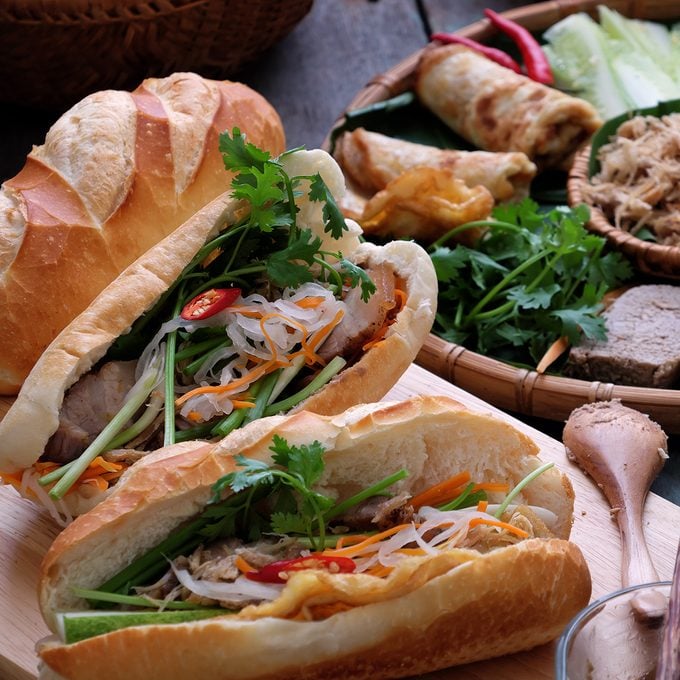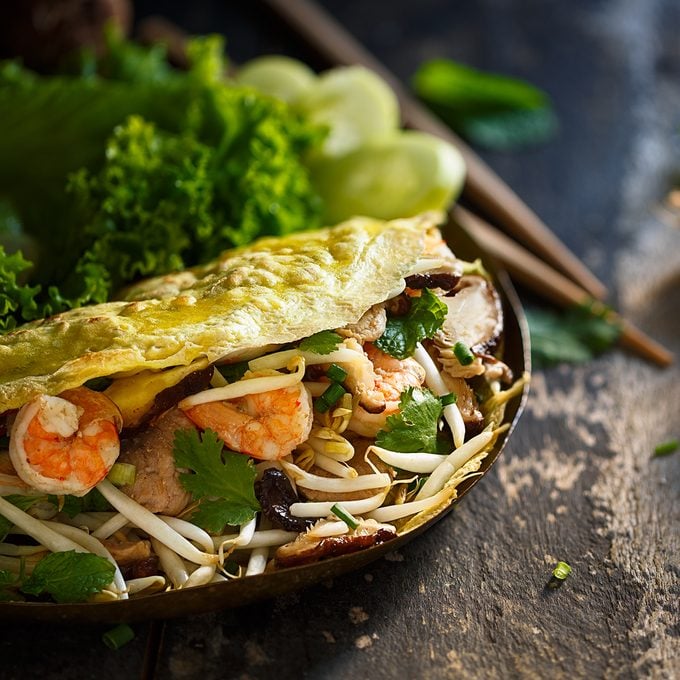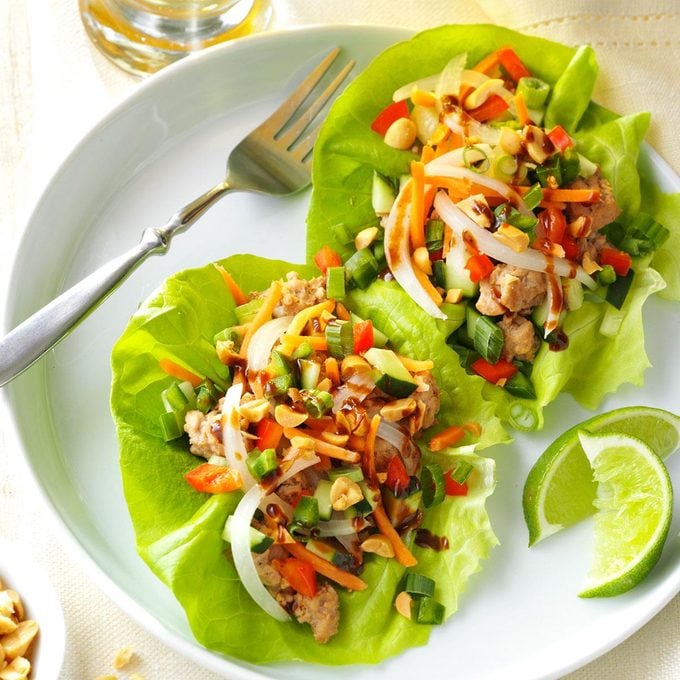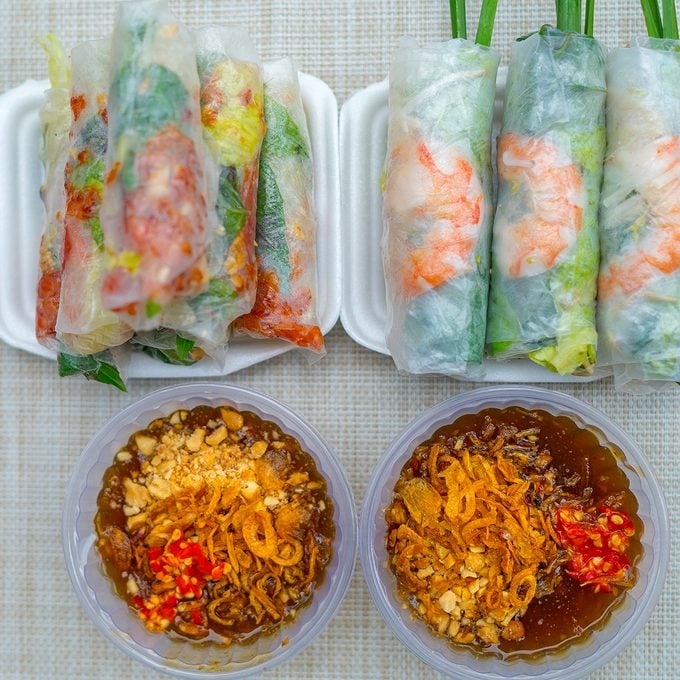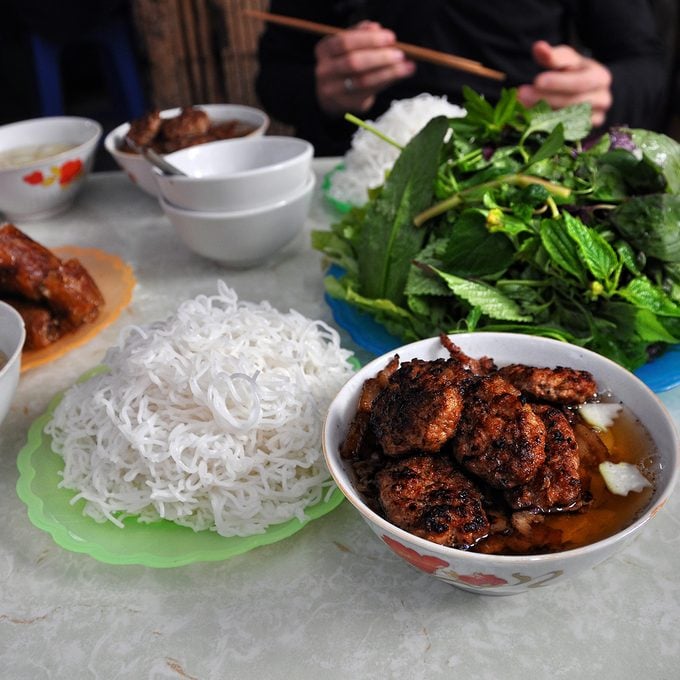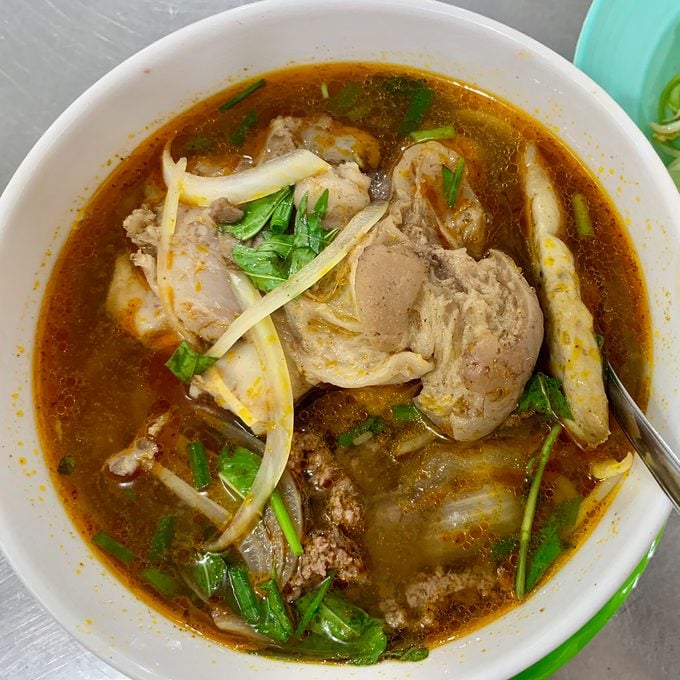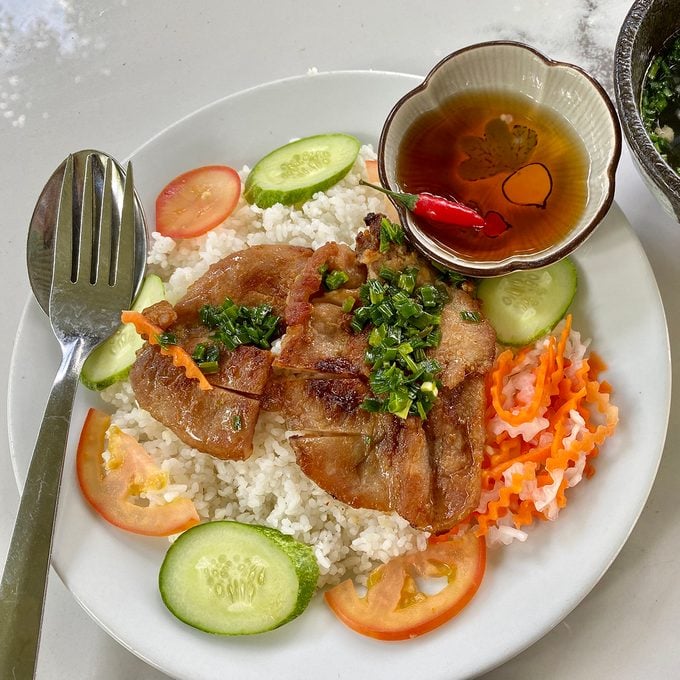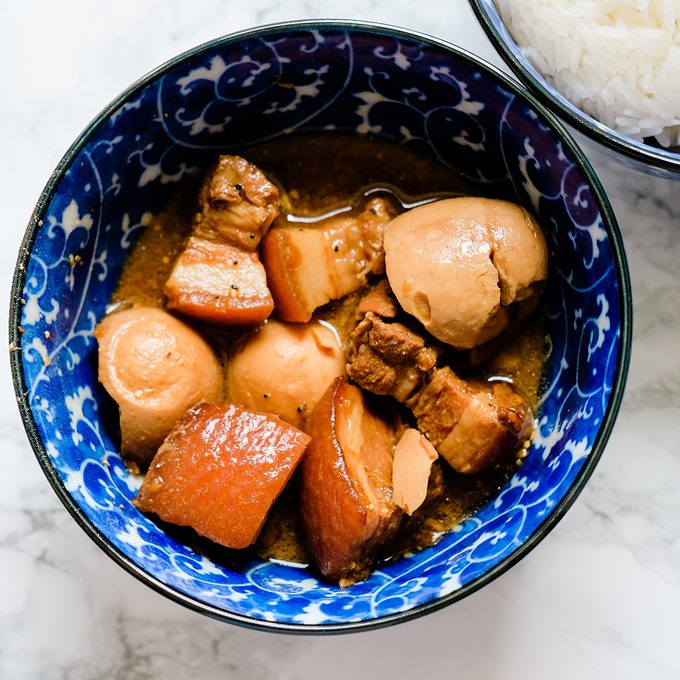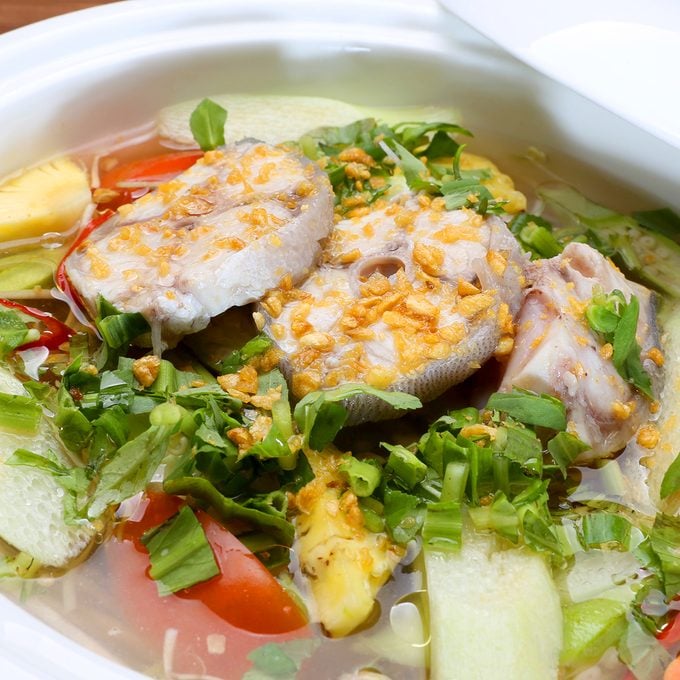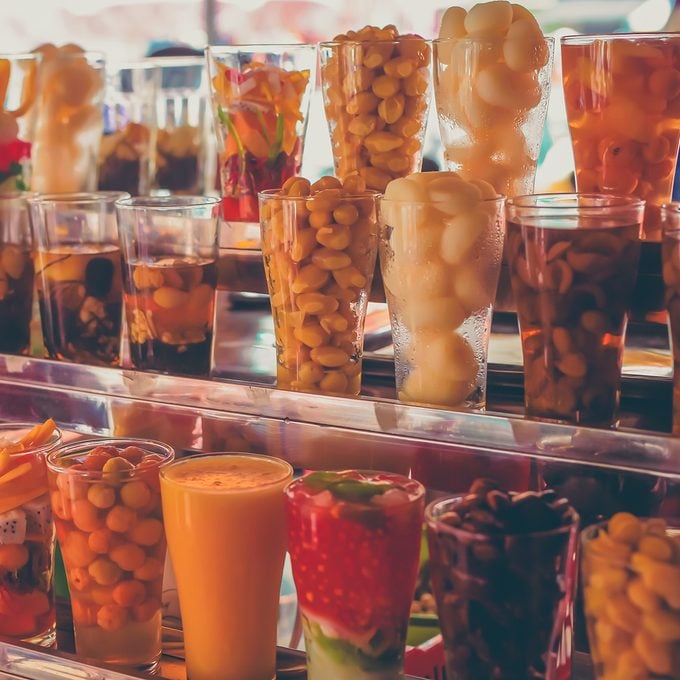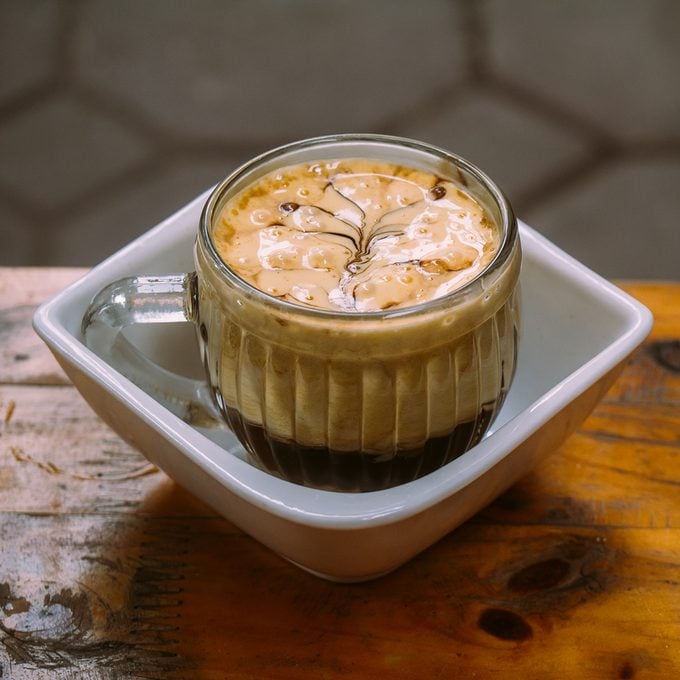What Is Pho and How Do You Make It?
Updated: Jan. 05, 2024
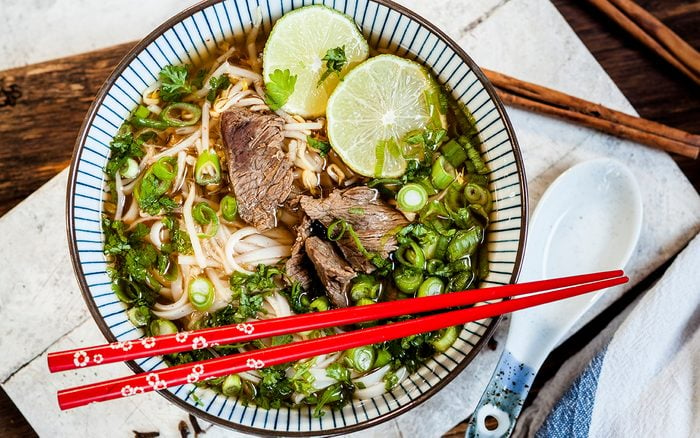
Whether you're new to pho and wondering "What is pho?" or it's your go-to Vietnamese order, we'll show you tips and tricks for making the comforting noodle soup at home.
A steaming bowl of pho is a Vietnamese staple that’s gained popularity worldwide. You’ve probably seen it on restaurant menus—but you may still be wondering: What exactly is pho? I chatted with food blogger Julie Tran Deily of The Little Kitchen to discuss all things pho, and get her tips for this endlessly customizable dish.
Pho was one of Julie’s favorite dishes growing up in a Vietnamese-American family. “Going out to eat was a treat for us since I come from a very large family. So when we would go to a Vietnamese restaurant for dinner as a family, I would order a bowl of pho and to go with it, sweetened soybean milk,” Julie says. When she eats it now, she adds, “it brings back so many memories.”
What Is Pho?
Pho, pronounced “fuh,” is a ubiquitous Vietnamese soup that consists of beef stock, rice noodles and sliced meat, traditionally beef. Most of pho’s flavor profile comes from the beef stock, which has an earthy, aromatic taste. Toppings and garnishes, like tart lime and spicy Sriracha, add a layer of bright and zesty flavors into the mix. While the origin story of pho and why it has become so popular isn’t completely clear, it definitely has a special place in Vietnamese culture—it is considered the country’s national dish, after all. And its warming, comforting taste has won over the hearts and stomachs of people from all corners of the globe, too.
“To me, pho is comfort food,” Julie says. “I grew up eating pho for special occasions, when my mom would make it for my whole family.”
How to Make Pho
While we’re sharing how to make one pho recipe, there are plenty of other variations of pho you can try. The two best-known types are beef (Julie’s favorite!) and chicken. You can even find vegan or vegetarian options that feature mushrooms, tofu and more. It’s not the easiest dish to make, but it’s so worth the effort.
Ingredients
Dam toi (Pickled garlic vinegar):
- 10 medium garlic cloves, thinly sliced lengthwise
- 2 cups water, divided
- 4 teaspoons salt, divided
- 1 cup white vinegar
- 1 to 2 Thai chiles
- 1 tablespoon sugar
Broth:
- 3-1/2 pounds beef leg or knuckle bones (choose ones with lots of marrow)
- 3 liters water, divided
- 4 tablespoons salt, divided
- 2 tablespoons cider vinegar
- 2-1/2 pounds beef top sirloin steak
- 2-1/2 pounds fresh beef brisket
- 1/4 cup dry white wine
- 1 piece fresh gingerroot (about 3 ounces), peeled and sliced lengthwise
- 2 large white onions, left whole, skin on
- 1 piece fresh gingerroot (about 3 ounces), left whole, skin on
- 2 cinnamon sticks (2.5 inches each)
- 3 whole star anise
- 2 large cardamom pods
- 1 teaspoon coriander seeds
- 4-1/2 teaspoons salt
- 1-1/2 teaspoons MSG, optional
- 1 teaspoon rock sugar or granulated sugar
To serve:
- 28 ounces banh pho rice noodles
- Garnish (Northern-style pho): Prepared dam toi, 1 large onion halved and sliced into strips soaked in ice water, 4 wedged medium limes, 3 sliced green onions, 8 minced Thai chiles
- Garnish (Southern-style pho): Fresh mung bean sprouts, hoisin sauce, sriracha, lime wedges, Thai chiles and chopped fresh Thai basil, coriander, mint and culantro (sawtooth herb/ngo om)
Editor’s Tip: MSG is a safe seasoning; it’s similar to salt with umami flavor. Here’s what you need to know about MSG.
Directions
Step 1: Prepare dam toi
Dam toi is used as a garnish for Northern-style pho. To make it, combine sliced garlic, 1 cup water and 3 teaspoons salt in a small bowl. Cover and refrigerate overnight; then drain in the morning. In a small jar, combine sliced garlic and vinegar. Heat remaining 1 cup water until hot; add to jar. Stir in sugar, remaining 1 teaspoon salt and chiles. Cover and let stand at room temperature overnight.
Step 2: Start broth
In a large saucepan, cover beef bones with 2 liters water. Add 2 tablespoons salt and cider vinegar. In another large saucepan, cover boneless beef with remaining 1 liter water, remaining 2 tablespoons salt, wine and sliced ginger. Cover both saucepans and refrigerate 2 hours; drain (discarding ginger from boneless meat). Add enough cold water to each saucepan to cover bones and meat. Bring to a boil over medium-high heat. Boil 3 minutes; drain both saucepans and rinse bones and and boneless beef.
Step 3: Simmer broth
In a stockpot, cover bones and boneless beef with enough cold water to cover everything completely (about 5 liters). Bring to a boil over medium-high heat. Reduce heat, then simmer, uncovered, skimming and discarding foam occasionally. Simmer until foam starts to collect more slowly, about 30 minutes.
Meanwhile, preheat the oven to 425°F.
Step 4: Roast onion and ginger
Arrange the whole onion and whole ginger on an ungreased baking sheet. Roast until slightly charred, 10-15 minutes, turning occasionally. Remove and discard charred skins; then set aside the onion and ginger.
Step 5: Toast aromatics
In a small skillet, toast cinnamon sticks, anise, cardamom pods and coriander over medium heat until aromatic, 1-2 minutes, stirring frequently. Cool. Place spices on a double thickness of cheesecloth. Gather corners of cloth to enclose spices in a bag; tie securely with string.
Step 6: Add aromatics to broth
Once foam is no longer collecting on the surface of the broth, add onion and ginger and spice bag. Stir in salt, MSG if desired and sugar. Simmer the broth, uncovered, until beef is tender, about 1-1/2 hours. With tongs, remove beef to a large bowl; cool slightly. Then wrap the beef tightly in foil and refrigerate.
Step 7: Continue to simmer broth
Continue simmering broth, uncovered, until broth is light golden brown and fragrant, 2-5 hours, stirring occasionally and removing any foam that collects on the surface.
Editor’s Tip: The broth can be covered and refrigerated for up to 3 days or frozen for up to 4 to 6 months.
Step 8: Assemble pho
To serve, cook banh pho according to package directions; set aside. Remove the beef from the refrigerator and thinly slice the meat against the grain.
For each serving, put an individual portion of noodles and beef in a small colander. Lower the colander into your simmering broth until then beef and noodles are heated through. Then add the warm beef and noodles to a serving bowl. Top with additional broth, about 1 cup. Serve the pho with garnishes as desired.
Julie’s Tip: When it comes to adding flavors to a bowl of pho, Julie sticks with the classics. “I like to squeeze some lime and add cilantro, green onions and Thai basil. I grew up adding Sriracha and hoisin sauce to my pho, to taste, but I know some people don’t think it needs it.”
How Do You Eat Pho?
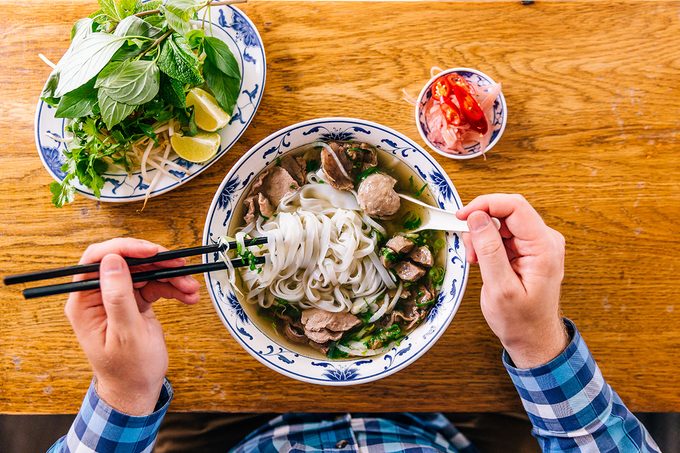
Julie’s favorite way to eat pho is with chopsticks in one hand and a soup spoon in the other. She uses chopsticks to pick up the rice noodles and a soup spoon to slurp up the broth. And yes, it is actually polite to slurp up your soup, she says: “When you’re eating pho, the louder the slurping noises, the better. It’s a compliment to the cook and telling them how much you love it!”
Pho is filling on its own, but you can always add a few sides to round out the meal. “Pho is such a treat that you don’t need to serve it with anything except herbs like Thai basil and bean sprouts,” Julie explains, “but when I go to a Vietnamese restaurant, I like to order tofu spring rolls to have as an appetizer.”
Now that you’ve mastered pho, try one of these other Vietnamese recipes.

